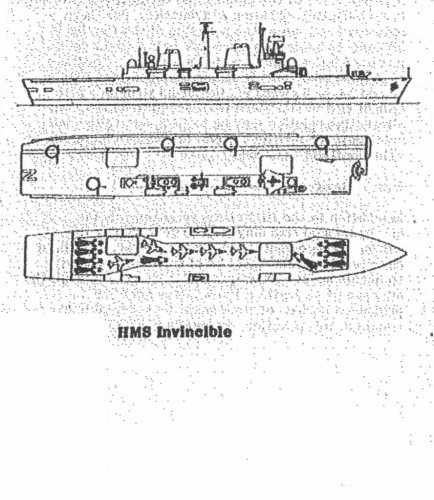pathology_doc said:
IOW a Big Call between an interceptor with secondary strike capability and a strike aircraft with dogfight capability but not necessarily optimised for the interceptor role. In the context of an ASW/escort group leader which is a nation's only carrier, and with a limited number of aircraft on the ship, I'd be biased towards the interceptor, quite frankly. That being said...
The Sea Harrier is NOT an interceptor with a secondary strike capability. It actually has superior strike capability than a AV-8B. It was always designed as a multi role strike fighter. In the Falklands most of its missions were combat air patrol because that was the need but they still carried out a series of important strike missions and could have flown more if not for conflicting tasking requirements with the RAF (ie politics!). The AV-8B can carry more stores further but the Sea Harrier is faster and before the Block 2 AV-8Bs with the APG-65 was a far superior naval aircraft.
pathology_doc said:
[1] There has to be a critical number beyond which having a mixture of types would start making sense, but one baby flat-top of the sort Australia would have been operating isn't enough to take that many to sea.
Two types of Harrier would never make sense for the RAN. The AV-16 would have been ideal but it never went ahead. And even if it did it was the RN’s preference for the Sea Harrier role.
pathology_doc said:
[2] It's arguable whether the Brits would have operated a mixture of types at the Falklands if the RAF hadn't already been operating the land-based Harrier in significant numbers. It's fortunate indeed that the RN had the option of reinforcing its carrier-based fighters with a land-based aircraft which was the same in all essential respects.
The GR.1 Harriers were only sent south because the UK Forces ran out of Sea Harriers. If they had another 10-12 then they would have been sent even if flown by RAF personnel.
As an addition to this discussion I was thinking last night that the best option available for the RAN at this time if the Government had been interested in maintaining the carrier force was not the HMS Invincible but the backup offer. When the UK requested that they keep this carrier their plan was to have a three Invincible class force to maintain two in service post Falklands War (lesson learnt). Invincible was the dog of the class having very bad engine vibration issues and the entire class while a nice modern ship with great systems was very badly designed to be a carrier.
When the RN asked to keep the Invincible they offered the Hermes in its place being available from 1985 (when Ark Royal would be online). Hermes was turned down by the Australian Government but would have made a much better ship for the RAN to replace Melbourne. For starters it was much cheaper being later sold to India for £60 million compared to £175 million deal for Invincible. The sale included a one year refit which I’m not sure of the specifics but I assume must have included reboilering considering how long India has kept it in service since. The light fleet carriers have proven themselves to have excellent hull life if properly maintained. Hermes was also larger and a much better carrier for aircraft and had a good ASW systems fit.
For the RAN the money saved between Hermes and Invincible could have been used to fit a brand new US spec air warfare radar and combat management system (NTU level) and provide the ship with CIWS and a thorough systems refresh (and reboilering, propulsion zero houring). But most interesting the ship could have been reverted to a conventional catapult and arrestor gear carrier. With the removal of the ski jump and refit of such gear including two new C13 catapults (but with limited length, 150 and 175 feet) this ship could operate the RAN’s legacy air wing. There would be no need to replace the Skyhawk and Tracker both of which had plenty of remaining life and established workforces.
Such a ship could easily operate an air wing of 12 A-4Gs, 12 S-2Gs and 12 Sea Kings. It could be in service by 1988 (commissioning of HMAS Australia during the Bicentennial Year) and remain in service until 2013 (RAN Centenary). The air wing could be modernised with the Skyhawks either going through something like the RNZAF Kahu upgrade or being replaced by Australian built F/A-18 Hornets (12 of which could fit onboard). The Trackers still had over 20,000 hours of flying life left on them and had modern digital acoustic processors. With the Grumman/Garret turboshaft upgrade they could be in service until the carrier needed replacing. While E-2 Hawkeyes might be a big too big for the Hermes the Tracker could be upgraded for AEW. Either Boneyard E-1 Tracers with a new radar or a Sea King AEW modification to the S-2G combined with turboshafts would provide excellent fleet AEW.
Such an option would have been a low cost, low risk way of maintaining the RAN’s carrier force and avoiding the need to rebuild the first three FFGs for ASW helicopters and buying 16 very expensive Seahawks to retain some kind of standoff ASW capability in the fleet.


